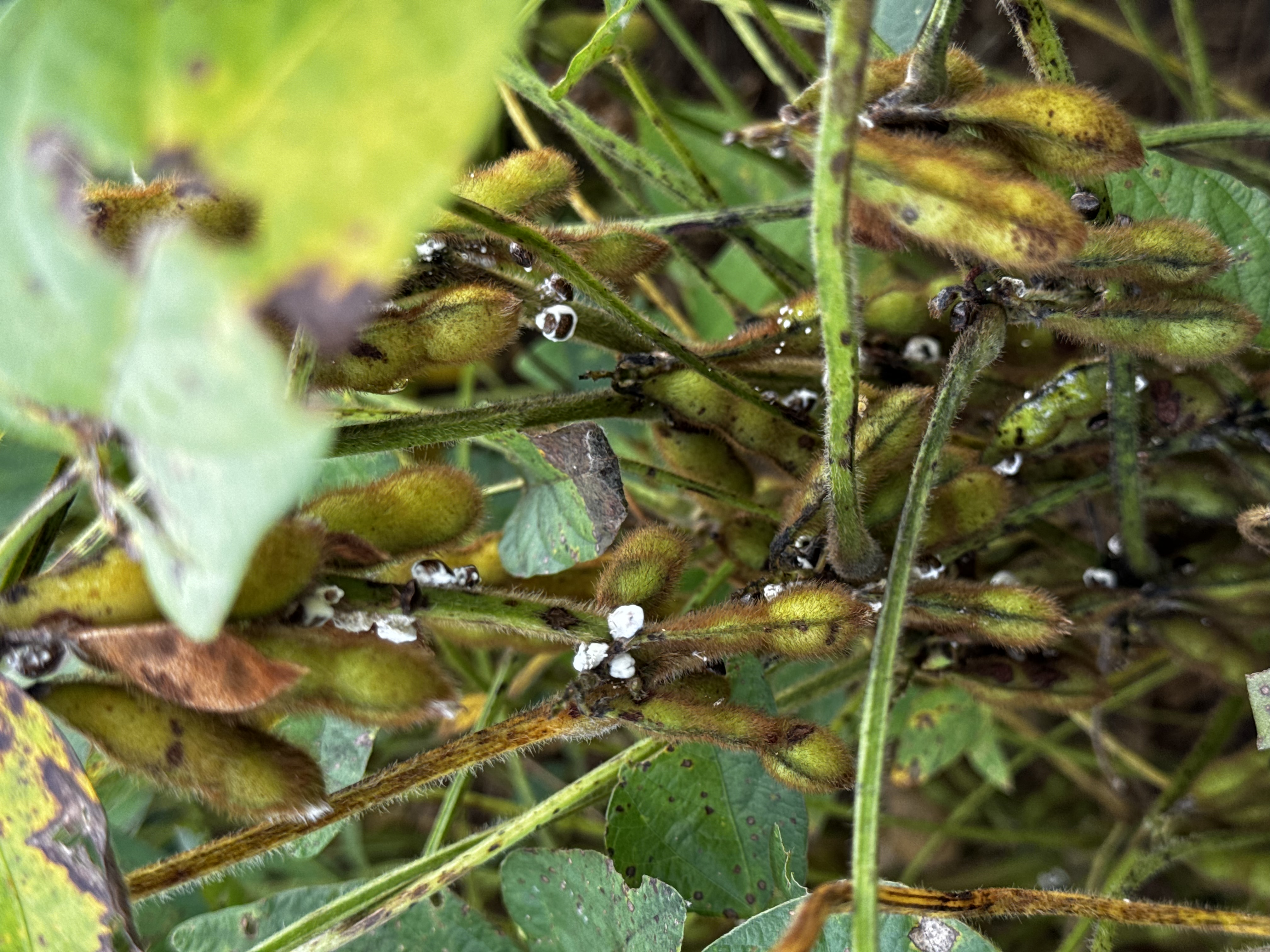Details:
This soybean field was scouted at the R7 (beginning maturity) growth stage and areas of dark brown discoloration on the stem were observed. Groupings of kudzu bugs were observed to be above threshold. A white matted growth was also observed on the bodies of the kudzu bugs.
The plant damage was confirmed by a NC State Extension Specialist as damage from the kudzu bugs. Kudzu bugs tap through the veins of plants to reach the phloem, using piercing sucking mouthparts. This is why symptoms may include stem discoloration, or lead to sooty mold on the leaves.
Conclusion:
Interestingly enough, in this case the white growth observed on the kudzu bugs is caused by fungus Beauveria bassiana. This fungus attacks kudzu bugs and suppresses or almost completely controls infestations.
Economic threshold for spraying kudzu bugs is five bugs per plant until mid-July. After mid-July the threshold is based on a sweep net method. It is recommended that if an insecticide is needed, it is applied once the migration period is over. However, insecticides effective for kudzu bug are broad-spectrum and many beneficial insects can be eliminated. This may make fields more susceptible to mid- to late-season lepidopteran infestations and judicious scouting should continue through R7.
Resources:
Kudzu Bug | NC State Extension
Treating for Kudzu Bugs | NC State Extension
Kudzu Bug | UT Institute of Agriculture


